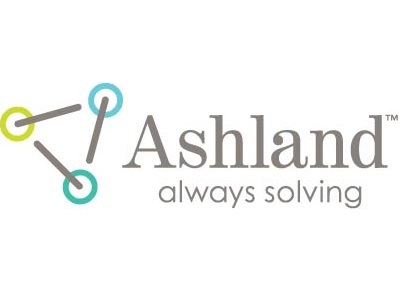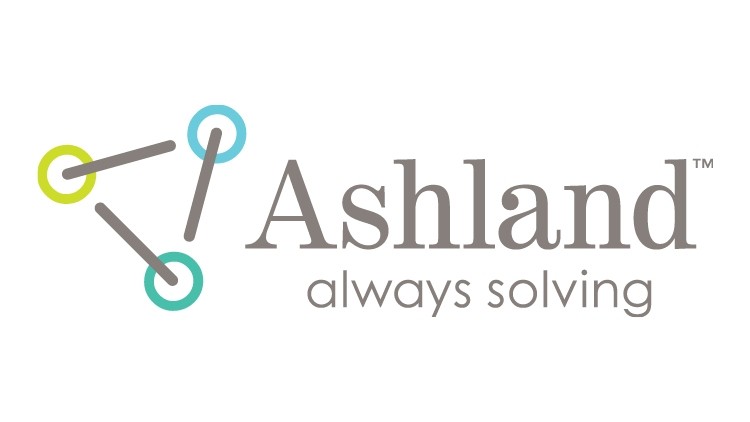Ashland Global Holdings’ Shares Up 7% Following Q2 Earnings Preannouncement

Ashland Global Holdings Inc. (NYSE:ASH) shares closed more than 7% higher today following the company’s preannounced Q2 results, expecting EBITDA to be $163 million, up 41% year-over-year, and 22% above the consensus estimate.
Strong demand and pricing more than offset higher costs for raw materials, freight and energy. Supply chain and labor challenges continued to affect shipments and on-time order delivery during Q2.
Prior to this quarter, the company had missed 3 consecutive quarters due to similar supply chain and labor shortage challenges and higher costs.
Also noteworthy was that EBITDA margins expanded for the first time since Q2/21 (up 460 bps year-over-year) driven by higher sales and pricing ahead of cost inflation.
| Symbol | Price | %chg |
|---|---|---|
| TPIA.JK | 7050 | 0 |
| AVIA.JK | 460 | 0 |
| SQM-B.SN | 45699 | 0 |
| 454910.KS | 77100 | 0 |

Ashland Inc. (NYSE: ASH) Price Target and Market Outlook
Ashland Inc. (NYSE:ASH) is a global leader in providing specialty ingredients and additives, with operations spanning four main segments: Life Sciences, Personal Care & Household, Specialty Additives, and Intermediates and Solvents. Founded in 1924 and headquartered in Wilmington, Delaware, Ashland offers a diverse range of products, including pharmaceutical solutions and chemical intermediates.
The consensus price target for Ashland has seen a notable decline over the past year, dropping from $94 to $60. This downward trend suggests a shift in analysts' expectations, possibly influenced by market conditions and company performance. Despite this, J.P. Morgan has set a higher price target of $105, indicating a more optimistic outlook for the stock's future.
Market conditions and company performance are key factors influencing Ashland's price target. The anticipated decline in Q2 earnings, as noted by analysts, suggests that Ashland may not meet expectations in its upcoming report. This could be due to a lack of key factors necessary for an earnings beat, as highlighted by J.P. Morgan. Industry trends and strategic decisions also play a role in shaping analysts' perceptions.
The specialty chemicals and additives industry is highly competitive, and any shifts in innovation or competition could impact Ashland's growth prospects. Additionally, strategic changes within the company could influence future performance expectations. Investors should stay informed about Ashland's financial performance and strategic initiatives.
The company's upcoming earnings release on April 30, 2025, and the subsequent webcast on May 1, 2025, will provide valuable insights. Monitoring these developments will help investors understand the factors affecting Ashland's stock performance and analysts' target prices.

Ashland Inc. (NYSE: ASH) Price Target and Market Outlook
Ashland Inc. (NYSE:ASH) is a global leader in providing specialty ingredients and additives, with operations spanning four main segments: Life Sciences, Personal Care & Household, Specialty Additives, and Intermediates and Solvents. Founded in 1924 and headquartered in Wilmington, Delaware, Ashland offers a diverse range of products, including pharmaceutical solutions and chemical intermediates.
The consensus price target for Ashland has seen a notable decline over the past year, dropping from $94 to $60. This downward trend suggests a shift in analysts' expectations, possibly influenced by market conditions and company performance. Despite this, J.P. Morgan has set a higher price target of $105, indicating a more optimistic outlook for the stock's future.
Market conditions and company performance are key factors influencing Ashland's price target. The anticipated decline in Q2 earnings, as noted by analysts, suggests that Ashland may not meet expectations in its upcoming report. This could be due to a lack of key factors necessary for an earnings beat, as highlighted by J.P. Morgan. Industry trends and strategic decisions also play a role in shaping analysts' perceptions.
The specialty chemicals and additives industry is highly competitive, and any shifts in innovation or competition could impact Ashland's growth prospects. Additionally, strategic changes within the company could influence future performance expectations. Investors should stay informed about Ashland's financial performance and strategic initiatives.
The company's upcoming earnings release on April 30, 2025, and the subsequent webcast on May 1, 2025, will provide valuable insights. Monitoring these developments will help investors understand the factors affecting Ashland's stock performance and analysts' target prices.

Ashland Inc. (NYSE: ASH) Earnings Report Analysis
- Ashland Inc. reported an EPS of -$3.51, significantly missing the estimated EPS of $0.79, with revenue also falling short at $405 million.
- The company's adjusted EBITDA was $61 million, a 13% decrease from the previous year, impacted by portfolio optimization initiatives.
- Financial ratios indicate moderate leverage and strong short-term stability, despite challenges highlighted by a negative price-to-earnings ratio.
Ashland Inc. (NYSE: ASH) is a prominent player in the global additives and specialty ingredients market, serving sectors like pharmaceuticals, personal care, and architectural coatings. On January 28, 2025, ASH reported an earnings per share (EPS) of -$3.51, significantly missing the estimated EPS of $0.79. The company's revenue was $405 million, falling short of the estimated $427 million.
For the quarter ending December 2024, Ashland's revenue of $405 million marked a 14.4% decline from the previous year. This shortfall was influenced by portfolio optimization initiatives, which reduced sales by approximately $50 million.
The company's adjusted EBITDA was $61 million, a 13% decrease from the previous year. The portfolio optimization initiatives reduced adjusted EBITDA by about $8 million. Excluding these initiatives, the adjusted EBITDA saw a 2% decline. This highlights the impact of strategic decisions on financial performance.
Ashland's financial ratios provide insight into its valuation and financial health. The price-to-sales ratio is approximately 1.64, and the enterprise value to sales ratio is about 2.23. The debt-to-equity ratio of 0.55 indicates moderate financial leverage, while a current ratio of 2.52 suggests strong short-term financial stability.
Despite these metrics, Ashland faces challenges, as indicated by a negative price-to-earnings ratio of -222.97 and an earnings yield of -0.0045. These figures suggest potential financial difficulties, yet the company remains committed to its fiscal year 2025 outlook, focusing on its core markets and strategic initiatives.

Ashland Inc. (NYSE: ASH) Earnings Report Analysis
- Ashland Inc. reported an EPS of -$3.51, significantly missing the estimated EPS of $0.79, with revenue also falling short at $405 million.
- The company's adjusted EBITDA was $61 million, a 13% decrease from the previous year, impacted by portfolio optimization initiatives.
- Financial ratios indicate moderate leverage and strong short-term stability, despite challenges highlighted by a negative price-to-earnings ratio.
Ashland Inc. (NYSE: ASH) is a prominent player in the global additives and specialty ingredients market, serving sectors like pharmaceuticals, personal care, and architectural coatings. On January 28, 2025, ASH reported an earnings per share (EPS) of -$3.51, significantly missing the estimated EPS of $0.79. The company's revenue was $405 million, falling short of the estimated $427 million.
For the quarter ending December 2024, Ashland's revenue of $405 million marked a 14.4% decline from the previous year. This shortfall was influenced by portfolio optimization initiatives, which reduced sales by approximately $50 million.
The company's adjusted EBITDA was $61 million, a 13% decrease from the previous year. The portfolio optimization initiatives reduced adjusted EBITDA by about $8 million. Excluding these initiatives, the adjusted EBITDA saw a 2% decline. This highlights the impact of strategic decisions on financial performance.
Ashland's financial ratios provide insight into its valuation and financial health. The price-to-sales ratio is approximately 1.64, and the enterprise value to sales ratio is about 2.23. The debt-to-equity ratio of 0.55 indicates moderate financial leverage, while a current ratio of 2.52 suggests strong short-term financial stability.
Despite these metrics, Ashland faces challenges, as indicated by a negative price-to-earnings ratio of -222.97 and an earnings yield of -0.0045. These figures suggest potential financial difficulties, yet the company remains committed to its fiscal year 2025 outlook, focusing on its core markets and strategic initiatives.

Ashland Inc. (NYSE:ASH) Quarterly Earnings Overview
- Ashland Inc. (NYSE:ASH) reported a revenue of $522 million, surpassing the Zacks Consensus Estimate.
- The company's EPS of $1.26 fell short of the consensus estimate, indicating a negative EPS surprise of 5.26%.
- Ashland's financial health is reflected in its P/E ratio of 28.01 and a strong current ratio of 2.98.
Ashland Inc. (NYSE:ASH) is a specialty chemicals company known for its innovative solutions across various industries. As a key player in the Zacks Chemical - Specialty industry, Ashland competes with other chemical companies by focusing on high-performance materials and specialty additives. The company is set to release its quarterly earnings on November 7, 2024, after market close, with Wall Street analysts estimating an EPS of $1.28 and projected revenue of $524.07 million.
In the recent quarter ending September 2024, Ashland reported a revenue of $522 million, marking a 0.8% increase from the previous year. This figure surpassed the Zacks Consensus Estimate of $518.74 million, resulting in a positive surprise of 0.63%. Despite this revenue success, the company's EPS of $1.26 fell short of the consensus estimate of $1.33, leading to a negative EPS surprise of 5.26%.
Ashland's financial performance is crucial for investors as they evaluate the company's ability to meet Wall Street expectations. The reported EPS of $1.26, although below estimates, shows a significant improvement from the $0.41 reported in the same quarter last year. This indicates a positive trend in earnings growth, despite the recent shortfall against analyst predictions.
The company's valuation metrics provide further insight into its financial health. Ashland's price-to-earnings (P/E) ratio of 28.01 suggests that investors are willing to pay a premium for its earnings. The price-to-sales ratio of 1.72 and enterprise value to sales ratio of 2.14 reflect the market's valuation of the company relative to its sales. These figures are important for understanding how the market perceives Ashland's growth potential.
Ashland's financial stability is also highlighted by its debt-to-equity ratio of 0.45, indicating a moderate level of debt compared to equity. The current ratio of 2.98 suggests a strong ability to cover short-term liabilities with short-term assets. These metrics, along with an enterprise value to operating cash flow ratio of 10.84, provide a comprehensive view of Ashland's operational efficiency and financial health.

Ashland Inc. (NYSE:ASH) Quarterly Earnings Overview
- Ashland Inc. (NYSE:ASH) reported a revenue of $522 million, surpassing the Zacks Consensus Estimate.
- The company's EPS of $1.26 fell short of the consensus estimate, indicating a negative EPS surprise of 5.26%.
- Ashland's financial health is reflected in its P/E ratio of 28.01 and a strong current ratio of 2.98.
Ashland Inc. (NYSE:ASH) is a specialty chemicals company known for its innovative solutions across various industries. As a key player in the Zacks Chemical - Specialty industry, Ashland competes with other chemical companies by focusing on high-performance materials and specialty additives. The company is set to release its quarterly earnings on November 7, 2024, after market close, with Wall Street analysts estimating an EPS of $1.28 and projected revenue of $524.07 million.
In the recent quarter ending September 2024, Ashland reported a revenue of $522 million, marking a 0.8% increase from the previous year. This figure surpassed the Zacks Consensus Estimate of $518.74 million, resulting in a positive surprise of 0.63%. Despite this revenue success, the company's EPS of $1.26 fell short of the consensus estimate of $1.33, leading to a negative EPS surprise of 5.26%.
Ashland's financial performance is crucial for investors as they evaluate the company's ability to meet Wall Street expectations. The reported EPS of $1.26, although below estimates, shows a significant improvement from the $0.41 reported in the same quarter last year. This indicates a positive trend in earnings growth, despite the recent shortfall against analyst predictions.
The company's valuation metrics provide further insight into its financial health. Ashland's price-to-earnings (P/E) ratio of 28.01 suggests that investors are willing to pay a premium for its earnings. The price-to-sales ratio of 1.72 and enterprise value to sales ratio of 2.14 reflect the market's valuation of the company relative to its sales. These figures are important for understanding how the market perceives Ashland's growth potential.
Ashland's financial stability is also highlighted by its debt-to-equity ratio of 0.45, indicating a moderate level of debt compared to equity. The current ratio of 2.98 suggests a strong ability to cover short-term liabilities with short-term assets. These metrics, along with an enterprise value to operating cash flow ratio of 10.84, provide a comprehensive view of Ashland's operational efficiency and financial health.







